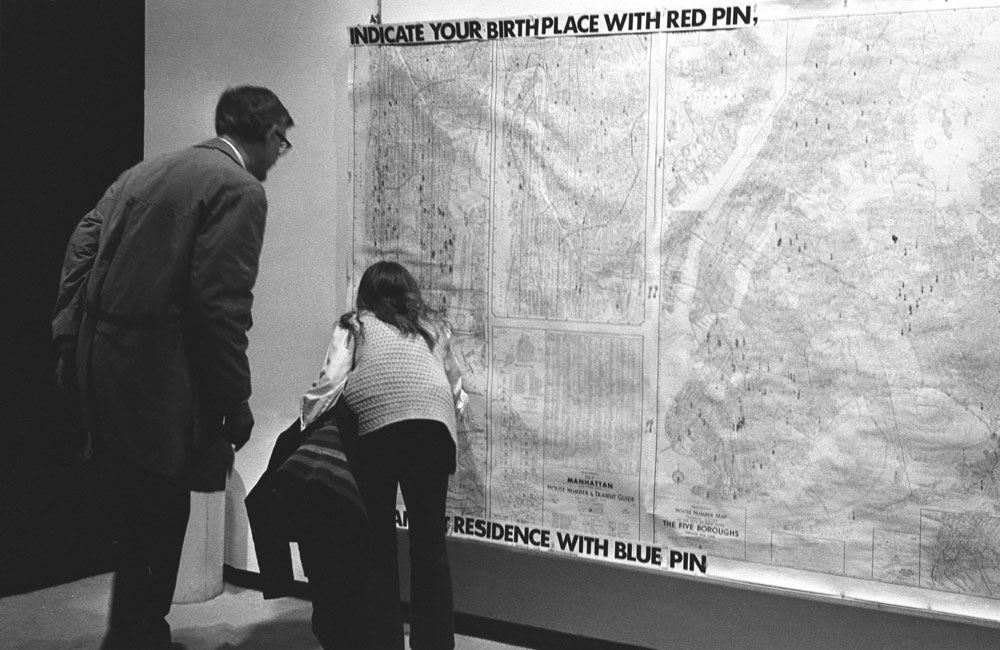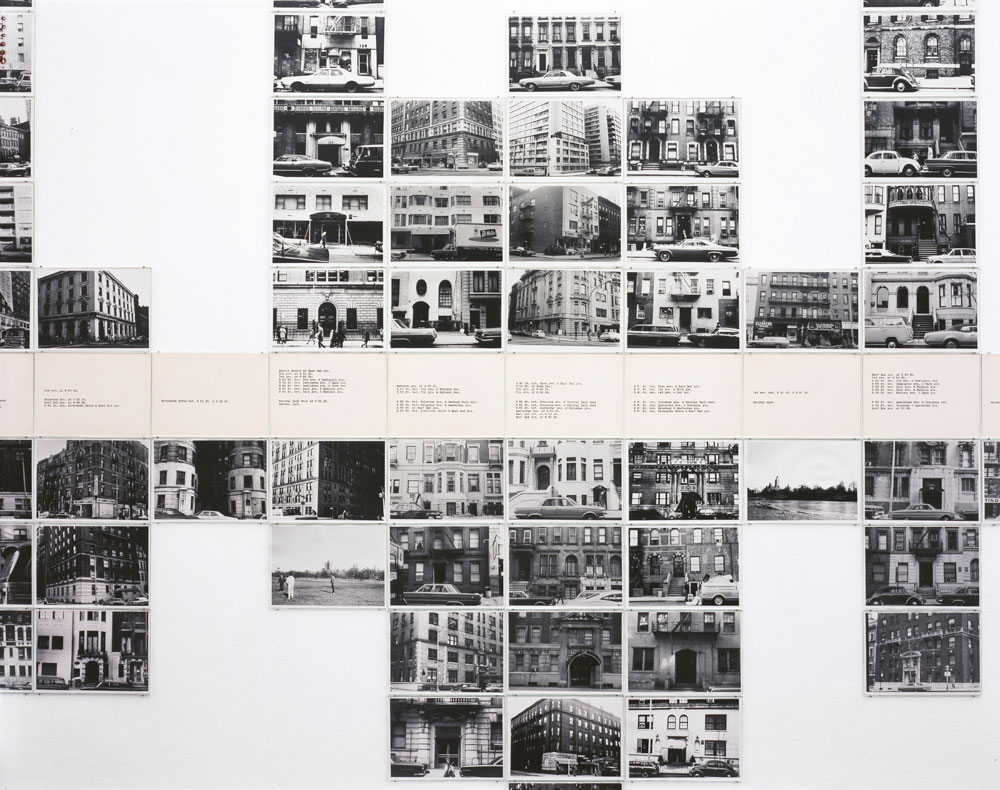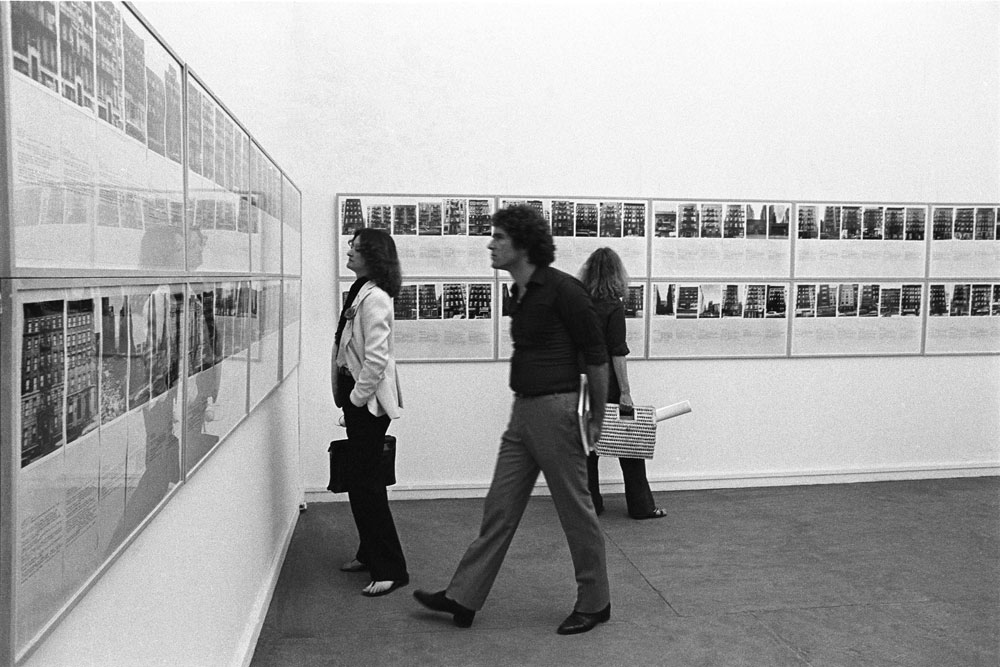ART-PRESENTATION: Hans Haacke All Connected
 For six decades, Hans Haacke has been a pioneer in kinetic art, environmental art, conceptual art, and institutional critique. The retrospective, entitled “Hans Haacke: All Connected,” brings together more than 30 works from across the artist’s career, focusing in particular on the way he expanded the parameters of his practice to encompass the social, political, and economic structures in which art is produced, circulated, and displayed.
For six decades, Hans Haacke has been a pioneer in kinetic art, environmental art, conceptual art, and institutional critique. The retrospective, entitled “Hans Haacke: All Connected,” brings together more than 30 works from across the artist’s career, focusing in particular on the way he expanded the parameters of his practice to encompass the social, political, and economic structures in which art is produced, circulated, and displayed.
By Dimitris Lempesis
Photo: New Museum Archive

Hans Haacke is known for his conceptual works criticizing political systems. In the 1970s, the Solomon R. Guggenheim Museum canceled his solo exhibition at the museum over his controversial work, including one about the real estate industry in New York City that is on display at the exhibition. The exhibition “Hans Haacke All Connected” includes a number of Haacke’s rarely seen kinetic works, environmental sculptures, and visitor polls of the late 1960s and early ’70s, all of which were central to discussions around systems aesthetics in art during that period; works from the 1970s and ’80s addressing the corporate sponsorship of major art institutions and political interference; and more recent works considering the intersection of global capitalism, nationalism, and humanitarian crises around the world. The exhibitionalso serve as the New York premiere of Haacke’s sculpture “Gift Horse” (2014), a bronze sculpture of a horse’s skeleton adorned with an LED ribbon streaming stock prices in real time, which the artist originally created for London’s Fourth Plinth program. Hans Haacke is known for his conceptual works criticizing political systems. A centerpiece of the retrospective is “Shapolsky et al. Manhattan Real Estate Holdings, A Real-Time Social System as of May 1, 1971”, the work that was the reason lost Haacke his Guggenheim solo exhibition. In 7/4/1971 the Solomon R. Guggenheim Museum canceled his exhibition. Thomas M. Messer, the museum’s director, said that the exhibit he objected to most was a set or photographs and documents relating to real estate held by two New York organizations. One was a large parcel of slum properties owned by a family group; the other was a cluster of commercial properties possessed by two partners, these are on display at the exhibition. Hans Christoph Carl Haacke was born in Cologne in 1936, during the period of extreme social change that saw the rise of the Nazi Government in Germany. By the time he was three years old WWII had begun, and by the age of six bombs regularly fell on the street he lived on. In 1956 Haacke enrolled at the State Art Academy in Kassel, where many of the professors taught at the Bauhaus prior to the war. He was also taught during his time in Kassel by the Stanley William Hayter. Around the same time, Haacke hitchhiked to Paris, where he became familiar with Art Informel and Tachisme. It was his encounter with the ZERO group, during one of their exhibitions in Bonn, that most influenced his early works however. Haacke soon became friends with Otto Piene, one of the founding members of ZERO, and began to exhibit alongside them. During this time Haacke also produced work that echoed elements of minimalism and land art. Another important influence in his work was the writings of playwright and poet Bertolt Brecht, who he came across during his student years. After graduating with a degree in art education in 1960, he worked at Hayter’s print studio for a year, becoming acquainted with Yves Klein and other Avant-Garde artists. Soon after, he received a Fulbright grant which allowed him to study at the Tyler School of Art in Philadelphia. While studying at Tyler School he often took the bus to New York to see exhibitions and make connections with other artists. After briefly returning to Germany at the end of his scholarship, in 1965 he moved permanently to New York City. Building on his early work with ZERO, Haacke’s practice continued to develop strategies for revealing the economic interactions of art markets and corporations. His dissatisfaction with the art industry (he underscores the use of the word industry instead of field), together with the student revolts around the world, the civil rights movement, and the Vietnam War, affected the new direction his work would take in the 1970s, when his art became increasingly political and critical of art institutions and bureaucratic systems. In the mid 1960s Haacke married Linda, his life-long partner and had two sons. The birth certificate of one of them, Carl Samuel Selavy, became in 1969 an art work titled “Birth Certificate of My Son (collaboration Linda & Hans Haacke)”. Carl’s last name, Selavy, is an homage to Marcel Duchamp’s alter ego Rrose Selavy. Throughout his career Haacke has never relied on sales to support his family. The teaching position that he held from 1967 until 2002 at Cooper Union, contributing to the foundation program on 3D design and the undergraduate sculpture program, was his main source of income for most of his career. Since the early 1970s he has been using a contract that gives him a percentage of any resale profit and power to determine where his work will be exhibited, regardless of the collector’s wish. Regarding the contract, he says, “it occasionally kills the deal. But I’m coming round to believe that the contract I insist on is a very useful litmus test as to who should, and who definitely should not, own my work”. Haacke maintained his rigid personal code throughout his career, refusing to participate in the 1969 São Paulo Biennial due to rise of a military dictatorship in Brazil. The Guggenheim controversy was not the only case of censorship throughout Haacke’s career. A few years later, his work “Manet-PROJEKT ’74” (1974) was censored from a German museum for connecting Édouard Manet’s “Bunch of Asparagus” (1880) to the Nazi Party through the former advisor to Hitler Hermann Josef Abs (chairman of the museum that donated it to the exhibition). Proposing a series of 10 information panels tracing the painting’s provenance, Haacke was disinvited from the exhibition. Haacke’s combative political stance became more pronounced with age. In 1985 he created “MetroMobiltan” now considered the centerpiece of his focus on institutional critique. The work reveals the connections between The Metropolitan Museum of Art, the oil company Mobil, and the apartheid system in South Africa. After “MetroMobiltan” he developed works that attacked English prime minister Margaret Thatcher, US president Ronald Reagan, and the Saatchi family – some of the most powerful collectors in the art world at the time. Throughout his career Haacke has been simultaneously glorified and vilified for his criticism. In “Sanitation” (2000), presented at the Whitney Biennial, he printed quotes from New York’s former major Rudolph Guiliani assailing artist Chris Ofili’s painting “The Holy Mary Virgin” (1996). Haacke’s use of Hitler’s official typeface fraktur, associating Guiliani and his Ofili criticism was seen by some as associating the episode with the holocaust. Many considered that this connection belittled the horrors of the genocide. Haacke even received threats via telephone and email, some accusing him of anti-Semitism. This charge is complicated by the fact that his wife and children are Jewish, and that he had previously exhibited at the Jewish Museum in New York.
Info: Curators: Gary Carrion-Murayari and Massimiliano Gioni, New Museum, 235 Bowery, New York, Duration: 24/10/19-24/1/20, Days & Hours: Tue-Wed & Fri-Sun 11:00-18:00, Thu 11:00-21:00, www.newmuseum.org







![Left: Hans Haacke, Sky Line, 1967. Nylon fishing line, helium, and balloons. Installation view: “Kinetic Environment II,” Central Park, New York, October 29, 1967. © Hans Haacke / Artists Rights Society (ARS), New York. Courtesy the artist and Paula Cooper Gallery, New York. Photo: Hans Haacke. Right: Hans Haacke, DER BEVÖLKERUNG [TO THE POPULATION], 2008. C-print on Alu-Dibond, 91 3/8 x 70 in (232 x 178 cm). © Hans Haacke / Artists Rights Society (ARS), New York. Courtesy the artist and Paula Cooper Gallery, New York](http://www.dreamideamachine.com/web/wp-content/uploads/2019/10/0103.jpg)





![Left: Hans Haacke, MoMA Poll, 1970. Two transparent ballot boxes with automatic counters and color-coded ballots, boxes: 40 x 20 x 10 in (101.6 x 50.8 x 25.4 cm) each, ballots: 3 x 2 1/2 in (7.6 x 6.4 cm) each. Installation view: “Information,” Museum of Modern Art, New York, 1970. © Hans Haacke / Artists Rights Society (ARS), New York. Courtesy the artist and Paula Cooper Gallery, New York. Right: Hans Haacke, Wir (Alle) sind das Volk [We (All) Are the People], 2003/2017. Banners and posters, banners: 200 3/4 × 86 in (510 × 220 cm) each; posters: 59 × 46 in (175 × 120 cm) each. Installation view: documenta 14, Rotes Palais, Friedrichsplatz, Kassel, Germany, 2017. © Hans Haacke / Artists Rights Society (ARS), New York. Courtesy the artist and Paula Cooper Gallery, New York. Photo: Hans Haacke](http://www.dreamideamachine.com/web/wp-content/uploads/2019/10/0171.jpg)

